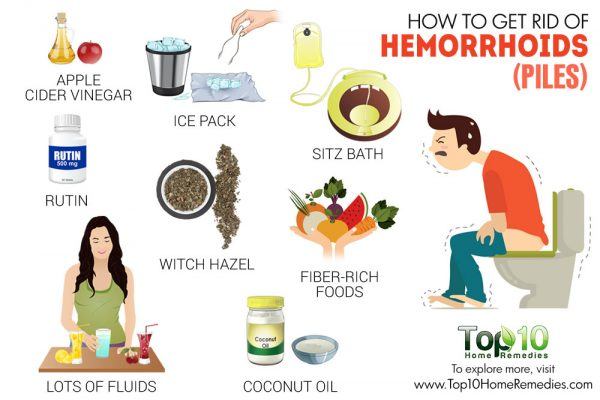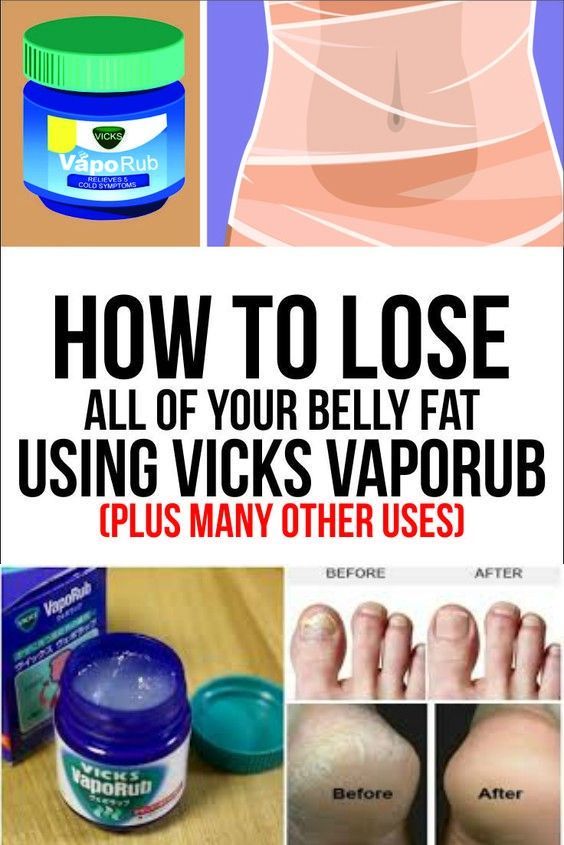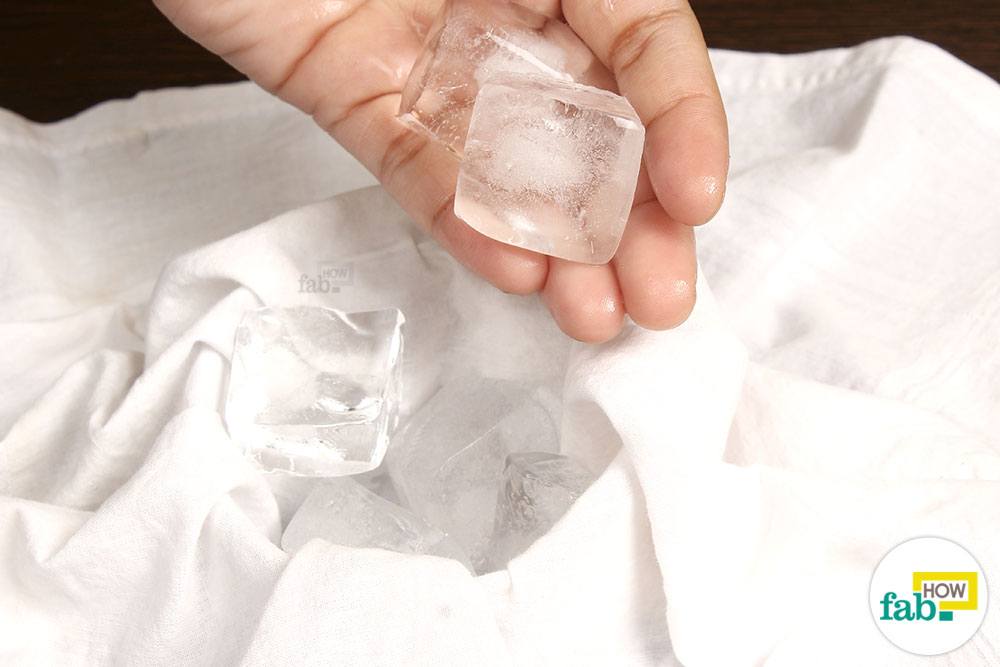How Is A Prolapsed Hemorrhoid Diagnosed
A prolapsed hemorrhoid may be easily visible during a doctors examination. They may also perform a digital exam.
During a digital exam, the doctor will insert a gloved, lubricated finger into your anus and up into the rectum to feel for hemorrhoids.
Internal hemorrhoids are graded based on the degree of prolapse:
| Internal hemorrhoid grade |
You may not need treatment from a doctor. There are several things you can do at home to relieve symptoms while the hemorrhoids swelling subsides:
- Try over-the-counter hemorrhoid products, such as topical ointments or suppositories that contain hydrocortisone.
- Eat more high-fiber foods, such as fruits, vegetables and whole grains, that can soften stool and ease straining during bowel movements.
- Soak in a warm bath for 10 or 15 minutes.
- Use a moist towelette or a similar damp wipe after a bowel movement, but make sure it doesnt contain alcohol or perfumes.
- Use ice packs around the hemorrhoid to reduce swelling.
If home care doesnt work and the hemorrhoid is bleeding or painful, a few treatment options are available. Treatment will depend on the type and grade of the prolapsed hemorrhoid.
Treatment options for prolapsed hemorrhoids are generally the same as treatments for other types of hemorrhoids.
Fewer than 10 percent of all hemorrhoid cases are treated surgically. Instead, your doctor will first consider less invasive treatments for prolapsed hemorrhoids.
Questions To Ask Your Doctor
- Why do I have hemorrhoids?
- Are there any lifestyle changes I can do that can relieve or prevent hemorrhoids?
- I saw blood on toilet paper. Is this serious?
- Are having hemorrhoids a sign of another health condition?
- Will I always have hemorrhoids?
- Is there medicine I can take for hemorrhoids? Are there side effects?
Headaches: Ice Or Heat
The right treatment depends on the type of headache you have. Headaches caused from tension can benefit from heat therapy, which helps relax tight muscles throughout the neck and jaw, says Jeffrey Yellin, DPT, CSCS, at Professional Physical Therapy. Sinus headaches can also benefit from the use of heat therapy to help warm nasal passages and loosen some of the built-up secretions. Migraines, or other vascular induced headaches, tend to respond better with the use of cold therapy.
You could also try these home remedies for headaches.
You May Like: How To Get Rid Of Hemorrhoids After Pregnancy
How Can I Manage My Symptoms
- Apply ice on your anus for 15 to 20 minutes every hour or as directed. Use an ice pack, or put crushed ice in a plastic bag. Cover it with a towel before you apply it to your anus. Ice helps prevent tissue damage and decreases swelling and pain.
- Take a sitz bath. Fill a bathtub with 4 to 6 inches of warm water. You may also use a sitz bath pan that fits inside a toilet bowl. Sit in the sitz bath for 15 minutes. Do this 3 times a day, and after each bowel movement. The warm water can help decrease pain and swelling.
- Keep your anal area clean. Gently wash the area with warm water daily. Soap may irritate the area. After a bowel movement, wipe with moist towelettes or wet toilet paper. Dry toilet paper can irritate the area.
When Hemorrhoid Surgery May Be Necessary

Very few people fewer than 10 percent of all adults who see a doctor because of symptomatic hemorrhoids will require a surgical operation.
Surgery to remove hemorrhoids is called a hemorrhoidectomy.
Your doctor may recommend a hemorrhoidectomy if:
- You have large external hemorrhoids
- You have both internal and external hemorrhoids
- An internal hemorrhoid has prolapsed
In a hemorrhoidectomy, the doctor makes a small incision to remove the hemorrhoid and surrounding tissue before closing the wound with stitches.
A hemorrhoidectomy is performed in an operating room and can be done under general anesthesia, in which you are unconscious and unable to feel pain.
It can also be done with a spinal anesthetic block while you are awake , or with a combination of relaxing and sedating drugs given intravenously and a local anesthetic injected around the anus.
Hemorrhoidectomy is associated with postoperative pain, but the procedure is successful for 95 percent of cases.
More recently, another option aimed at avoiding the postoperative pain of a hemorrhoidectomy has become available, called a stapled hemorrhoidopexy. A circular stapling device pulls the hemorrhoidal tissue upward and to its normal position, stapling it in place. The staples eventually fall out over time.
There are many options for the treatment of hemorrhoids. Its best to discuss the benefits and risks of each of these with your doctor in order to come up with the treatment plan that is best for your particular case.
You May Like: How To Get Rid Of Hemorrhoids While Pregnant
What Are The Symptoms
The main sign that you have a prolapsed hemorrhoid is the presence of one or more lumps around the anus. This will only occur if the prolapse is significant.
In some cases, you can gently push a lump back through the anus. While that changes the hemorrhoids location and may ease some symptoms, the hemorrhoid is still present.
What Are External Hemorrhoids
External hemorrhoids get their name from where they are found near the anus or lower rectum. They are the more obvious affliction and appear under the skin on the outside of the anus. This type of hemorrhoid typically becomes itchy, feels hard and lumpy, and often becomes painful or extremely uncomfortable, especially when sitting. If a blood clot forms inside the hemorrhoid, a person can experience sharp and severe pain. Ultimately, the clot will dissolve over time, but can leave a reminder it was there in the form of excess skin or a skin tag. External hemorrhoids usually form due to excess straining or when one sits on the toilet for too long.
Recommended Reading: Do Suppositories Help Heal Hemorrhoids
How Are Hemorrhoids Treated
Treatment will depend on your symptoms. You may need any of the following:
- Medicines can help decrease pain and swelling, and soften your bowel movement. The medicine may be a pill, pad, cream, or ointment.
- Procedures may be used to shrink or remove your hemorrhoid. Examples include rubber-band ligation, sclerotherapy, and photocoagulation. These procedures may be done in your healthcare provider’s office. Ask your healthcare provider for more information about these procedures.
- Surgery may be needed to shrink or remove your hemorrhoids.
Add Fiber To Your Diet
Adding fiber to your diet can help relieve constipation by making stools softer and easier to pass. To increase your fiber intake, your healthcare provider may recommend a bulking agent, such as psyllium. This is a high-fiber supplement available at most grocery stores and drugstores. Eating more fiber-rich foods will also help. There are two types of fiber:
-
Insoluble fiber is the main ingredient in bulking agents. Its also found in foods such as wheat bran, whole-grain breads, fresh fruits, and vegetables.
-
Soluble fiber is found in foods such as oat bran. Although soluble fiber is good for you, it may not ease constipation as much as foods high in insoluble fiber.
You May Like: Can You Live With Hemorrhoids
How Long Should You Ice An Injury
Michael Menna, DO, is a board-certified, active attending emergency medicine physician at White Plains Hospital in White Plains, New York.
One of the most common questions asked in outpatient physical therapy clinics is, “How long should I ice an injury?” When should ice be applied, and how long should you keep the ice on your injured body part?
Ice should be applied to an acute injury for 10 minutes at a time. Any longer than this could result in tissue damage to the skin by frostbite or lack of blood flow. You can apply ice several times each day.
When To Stop Icing
The 10 minute ice time is really just a general guideline. What if you just can’t tolerate 10 minutes of icing on an injured body part? Is there another way to know when to stop icing?
There is. You can use the CBAN method of icing. CBAN is an acronym that stands for cold, burn, ache, numb. Those are the sensations you should feel when applying ice to your injured body part.
When you first put ice on, it should feel cold. After keeping ice in place on your injured body part for a few minutes, you should feel a slight burning sensation. This should only last for a few minutes, and then it will be replaced by an ache.
After the aching, you will notice that the ice is making your skin feel numb. When you get to the numb feeling, it is time to remove the ice, regardless of the amount of time you have placed the ice on your body. The CBAN acronym simply uses your own body’s sensations to tell you when to remove the ice.
Recommended Reading: What Can I Do For Hemorrhoids
Hydrate Yourself With Enough Water
Adequate water intake is the most straightforward strategy to keep your digestive system running smoothly.
When suffering from either internal or external hemorrhoids, increase your water intake. Try to drink at least 8 to 10 glasses of water per day.
Adequate water intake helps clean your internal system and hydrates your entire body. It also facilitates bowel movements and keeps the stools soft, reducing the need for straining.
When you dont drink enough water and other fluids, the process of flushing out waste from the body slows down, and there can be a backlog in the bowel. The result is hard stools, which will worsen the problem of hemorrhoids.
Hemorrhoids : Home Remedies To Reduce The Discomfort

Hemorrhoids are lumps of tissue with blood vessels, muscles, and elastic fibers present in the anal passage. While most people think hemorrhoids are abnormal, the truth is everyone has them.
However, when the hemorrhoids surrounding the anal canal and the rectum become enlarged and engorged with blood, they cause symptoms. Enlarged hemorrhoids, also called piles, have caused millions of people discomfort, pain, and irritation.
Hemorrhoids are common and tend to occur more frequently in individuals between the ages of 45 and 65. As many as 75% of people in the United States have been affected by piles at some point in their lives.
A case of hemorrhoids is not a very serious affair. They usually clear up on their own, but prolonged hemorrhoids accompanied with bleeding should be taken care of to avoid severe complications.
Fortunately, you can alleviate the symptoms of enlarged hemorrhoids by introducing some changes in your diet and lifestyle and trying out some simple and natural remedies.
Contents
- Itching and soreness around the anus
- Swelling around the anal region
- Mucus discharge from the anus
- Discomfort and an urge to defecate even right after visiting the toilet
- Hanging hemorrhoids that need to be pushed back using your fingers after a bowel movement
Also Check: Is Cranberry Juice Good For Hemorrhoids
Use Simple Toilet Paper
Scented and coloured toilet paper contain extra chemicals that could irritate sensitive areas. Dampen plain, white, unscented toilet paper or use a moist towelette when you need to wipe. Follow up by applying an unscented moisturizer with a facial tissue.
Here are seven tips for healthy bowel movements.
Sciatic Pain: Ice Then Heat
Sciatic pain originates in the back and radiates pain or numbness down the leg. You might need a cold pack or heat pack placed on the lower back, not the leg. Oftentimes, people will attempt to utilize heat or ice to address symptoms at the location in which they occur, Yellin says. This may seem like a good idea in theory however, if the symptoms are neurological in nature and their root cause is closer to the spine, then applying ice at the spine is what is needed. Applying heat or ice where the symptoms are located, such as down the back of the leg or calf, will not do much.
Also Check: What Kind Of Surgeon Removes Hemorrhoids
Diagnosis For Hemorrhoids Vs Rectal Prolapse
If you notice symptoms like blood in your stool or constant irritation around your anus, it is a good idea to see a physician. They can evaluate you and determine whether you have hemorrhoids or a rectal prolapse.
Diagnosis for hemorrhoids
Doctors typically diagnose hemorrhoids by performing a physical exam and asking you about your symptoms. They may also request additional testing like:
- Digital rectal examination : The doctor covers their hand with a lubricated glove, then inserts their finger inside your rectum to check for issues.
- Anoscopy: The doctor inserts a hollow, lighted tube inside your anus to get a view of any internal hemorrhoids.
- Proctoscopy: The doctor places a lighted tube inside your anus to get a view of your entire rectum.
- Sigmoidoscopy: The doctor looks at part of your large intestine with a small, flexible, lighted tube that blows air into your rectum so that it swells.
- Coloscopy: This test lets the doctor see the entire length of your large intestine, which allows them to check for abnormal growths, red or swollen tissue, ulcers, or any bleeding.
Diagnosis for rectal prolapse
In addition to performing a physical exam, your doctor may request the following tests when checking for rectal prolapse:
Consider Having A Clot Removed
External hemorrhoids can result in extremely painful blood clots, and while theyre not dangerous, they can take a couple of weeks to resolve on their own. If yours scores high on your personal pain scale, a doctor can remove a thrombosed hemorrhoid with a relatively simple in-office procedure under local anesthetic in about 10 minutes. Keep in mind: The first 24 to 48 hours are typically the most painfuland the best time to have a clot removed, says Dr. Ky.
Don’t Miss: Can You Get Hemorrhoids Removed
How Can I Take Care Of Myself
Always tell your healthcare provider when you have rectal bleeding. Although bleeding is often from hemorrhoids, more serious illnesses, such as colon cancer, can also cause bleeding.
Follow these guidelines to help prevent hemorrhoids and to relieve their discomfort:
- Do not strain during bowel movements. The straining makes hemorrhoids swell.
- Follow your high-fiber diet and drink plenty of water. If necessary, take a stool softener, such as Haley’s M-O, psyllium, Metamucil or Citrucel, or mineral oil. Softer stools make it easier to empty the bowels and reduce pressure on the veins.
- Don’t overuse laxatives. Diarrhea can be as irritating to the anus as constipation.
- Ask your healthcare provider what nonprescription product you should buy to relieve pain and itching. Also, ask about any side effects of any medications prescribed for you.
- Exercise regularly to help prevent constipation.
- Avoid a lot of wiping after a bowel movement if you have hemorrhoids. Wiping with soft, moist toilet paper may relieve discomfort. If necessary, shower instead of wiping, and then dry the anus gently.
- Avoid lifting heavy objects when you have hemorrhoids. It may increase the pressure on the veins and make the hemorrhoids worse.
Ease Pain And Itching
Take warm baths. Soak in a bathtub filled with a few inches of warm water for about 15 minutes at a time. Do it two or three times a day and after every bowel movement. If you want to wash the area, too, use unscented soap and don’t scrub.
Pat gently afterward to dry. You can even use a blow dryer on a cool setting if that feels better.
There are also special “sitz baths” you can put directly on your toilet seat to make soaking easier.
Rub on relief. Over-the-counter wipes or creams with witch hazel can soothe pain and itch with no side effects. Don’t use one with hydrocortisone for more than a week unless your doctor says it’s OK.
Ice it. Put a small cold pack on the trouble spot several times a day. It can dull pain and bring down the swelling for a little while.
Consider painkillers. An over-the-counter medicine, like acetaminophen, aspirin, or ibuprofen, could help with soreness.
Don’t scratch. You could damage the skin and make the irritation — and the itching — worse.
Choose cotton. Wear loose, soft underwear. It keeps the area aired out and stops moisture from building up, which can bother your hemorrhoids.
Don’t Miss: How To Soothe Internal Hemorrhoids
Soak It Off In A Sitz Bath
A sitz bath comes from the German word sitzen, meaning sit, and it refers to a 10 to 15 minute soak in warm water that comes just up to your bottom and hips. Sitz baths can relieve irritation and itching as well as spasm of your anal sphincter muscles, says Dr. Thomas. Take a shallow soak in your bathtub or buy a small plastic tub from your pharmacy to give yourself a portable sitz bath two to three times a day.
Increase Your Dietary Fiber Intake

Filling up on fibrous foods can bring regularity in your bowel movements. A healthy bowel function can help you prevent any future risks of piles.
Dietary fiber helps to create bulk in the intestine, which keeps your stools soft so that they can pass easily down the rectum and you do not have to strain during a bowel movement.
A 2006 study published in the American Journal of Gastroenterology supported the consistent beneficial effects of fiber consumption in the treatment of symptomatic and bleeding hemorrhoids.
Fiber-rich foods include:
- Fresh fruits such as pears, bananas, apples, raspberries, and figs
- Vegetables such as broccoli, green peas, and artichoke
- Whole grains such as oatmeal, brown rice, and barley
- Legumes such as beans and lentils
Note:
Also Check: Does Emuaid Work For Hemorrhoids